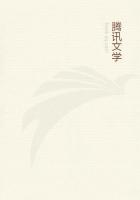"Physiologically, sensation is bound up with the presence of some kind of nerve apparatus, however simple. It is therefore characteristic of all animal structures that they are capable of sensation, i.e., of a subjectively conscious awareness of their states. The sharp boundary line between plant and animal lies at the point where the leap to sensation takes place. Far from being obliterated by the known transitional structures, that line becomes a logical necessity precisely through these externally undecided or undecidable forms" {D. Ph. 141-42}.
And again:
"On the other hand, plants are completely and for all time devoid of the slightest trace of sensation, and even lack any capacity for it" {140}.
In the first place, Hegel says (Naturphilosophie , § 351, Addendum) that "sensation is the differentia specifica ["specific difference"] , the absolute distinguishing characteristic of the animal".
So once again we find a Hegelian "crudity" {D. K. G. 235}, which through the simple process of appropriation by Herr Dühring is raised to the honourable position of a final and ultimate truth.
In the second place, we hear for the first time here of transitional structures, externally undecided or undecidable forms (fine gibberish!)between plant and animal. That these intermediate forms exist; that there are organisms of which we cannot say flatly whether they are plants or animals; that therefore we are wholly unable to draw a sharp dividing line between plant and animal -- precisely this fact makes it a logical necessity for Herr Dühring to establish a criterion of differentiation which in the same breath he admits will not hold water! But we have absolutely no need to go back to the doubtful territory between plants and animals;are the sensitive plants which at the slightest touch fold their leaves or close their flowers, are the insect-eating plants devoid of the slightest trace of sensation and do they even lack any capacity for it? This cannot be maintained even by Herr Dühring without "unscientific semi-poetry"{D. Ph. 56, 142}.
In the third place, it is once again a free creation and imagination on Herr Dühring's part when he asserts that sensation is physiologically bound up with the presence of some kind of nerve apparatus, however simple.
Not only all primitive animals, but also the zoophytes, or at any rate the great majority of them, show no trace of a nerve apparatus. It is only from the worms on that such an apparatus is regularly found, and Herr Dühring is the first person to make the assertion that those animals have no sensation because they have no nerves. Sensation is not necessarily associated with nerves, but undoubtedly with certain albuminous bodies which up to now have not been more precisely determined.
At any rate, Herr Dühring's biological knowledge is sufficiently characterised by the question which he does not hesitate to put to Darwin:
"Is it to be supposed that animals have developed out of plants?" {110}.
Such a question could only be put by a person who has not the slightest knowledge of either animals or plants.
Of life in general Herr Dühring is only able to tell us:
"The metabolism which is carried out through a plastically creating schematisation" (what in the world can that be?) "remains always a distinguishing characteristic of the real life process" {141}.
That is all we learn about life, while in the "plastically creating schematisation"we are left knee-deep in the meaningless gibberish of the purest Dühring jargon. If therefore we want to know what life is, we shall evidently have to look a little more closely at it ourselves.
That organic exchange of matter is the most general and most characteristic phenomenon of life has been said times out of number during the last thirty years by physiological chemists and chemical physiologists, and it is here merely translated by Herr Dühring into his own elegant and clear language.
But to define life as organic metabolism is to define life as -- life;for organic exchange of matter or metabolism with plastically creating schematisation is in fact a phrase which itself needs explanation through life, explanation through the distinction between the organic and the inorganic, that is, that which lives and that which does not live. This explanation therefore does not get us any further.
Exchange of matter as such takes place even without life. There is a whole series of processes in chemistry which, given an adequate supply of raw material, constantly reproduce their own conditions, and do so in such a way that a definite body is the carrier of the process. This is the case in the manufacture of sulphuric acid by the burning of sulphur.
In this process sulphur dioxide, SO2, is produced, and when steam and nitric acid are added, the sulphur dioxide absorbs hydrogen and oxygen and is converted into sulphuric acid, H2SO4. The nitric acid gives off oxygen and is reduced to nitric oxide; this nitric oxide immediately absorbs new oxygen from the air and is transformed into the higher oxides of nitrogen, but only to transfer this oxygen immediately to sulphur dioxide and to go through the same process again; so that theoretically an infinitely small quantity of nitric acid should suffice to change an unlimited quantity of sulphur dioxide, oxygen and water into sulphuric acid. -- Exchange of matter also takes place in the passage of fluids through dead organic and even inorganic membranes, as in Traube's artificial cells. [45] Here too it is clear that we cannot get any further by means of exchange of matter; for the peculiar exchange of matter which is to explain life needs itself to be explained through life. We must therefore try some other way.
Life is the mode of existence of albuminous bodies , and this mode of existence essentially consists in the constant self-renewal of the chemical constituents of these bodies.















